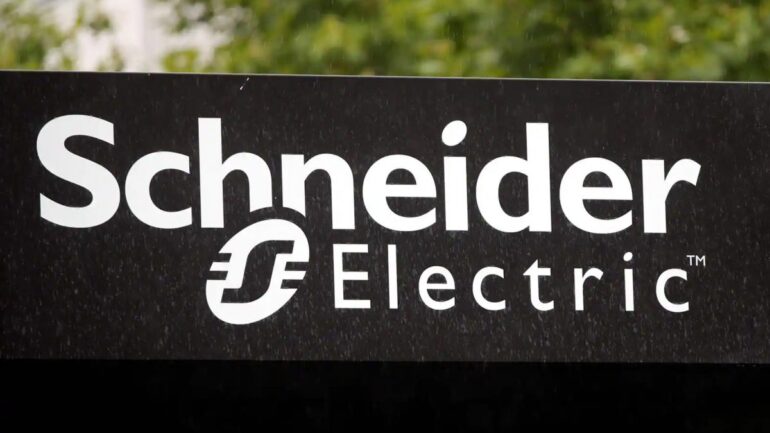TL;DR:
- Schneider Electric introduces an enhanced environmental metrics-reporting framework for data centers.
- The 2023 revision reinforces the company’s commitment to sustainability based on customer and industry feedback.
- The framework comprises 28 key metrics across energy, greenhouse gas emissions, water, waste, and local ecosystems.
- Three reporting stages cater to different sustainability journey phases: Beginning, Advanced, and Leading.
- Schneider Electric emphasizes “local ecosystem” metrics to measure biodiversity impact.
- The EcoStruxure Resource Advisor Copilot, an AI tool, enhances energy and sustainability data management.
- Schneider Electric’s commitment extends to other AI-enabled solutions in its sustainability portfolio.
- Pankaj Sharma, EVP at Schneider Electric, calls for standardized data-driven reporting in the data center industry.
Main AI News:
In a bold move towards championing sustainability in key industries, Schneider Electric has unveiled an enhanced environmental metrics-reporting framework. The framework promises to be a game-changer, especially for data centers grappling with the dual challenges of rapid technological growth and the imperative to reduce environmental impact to net zero.
Originally introduced in November 2021, the company’s whitepaper laid the foundation for standardizing sustainability reporting in the data center sector. With the release of the 2023 revision, Schneider Electric reinforces its unwavering commitment to sustainability, underpinned by valuable feedback from customers and industry associations.
A Blueprint for Sustainable Progress
Schneider Electric’s revised framework comprises 28 crucial sustainability metrics categorized into five key areas: energy, greenhouse gas emissions, water, waste, and local ecosystems. Recognizing that data center companies are at various stages of their sustainability journey, the whitepaper delineates metrics across three reporting phases: Beginning, Advanced, and Leading.
The Beginning stage introduces six fundamental metrics, encompassing energy, water use, and greenhouse gas emissions. These metrics serve as the bedrock for every data center, ensuring basic reporting requirements are met. In contrast, the Advanced stage delves deeper, offering a more comprehensive set of metrics for energy, water, GHG emissions and introducing two novel categories: waste and local ecosystem. The Leading stage further raises the bar with even more granular metrics within the existing categories.
Notably, Schneider Electric places a heightened emphasis on the “local ecosystem” category, adding metrics like “total land use,” “land use intensity,” and “outdoor noise” to gauge the direct and indirect impact on biodiversity—a testament to the company’s holistic approach to sustainability.
Driving Sustainability Through Technology
Concurrently, Schneider Electric introduces the EcoStruxure Resource Advisor Copilot, a conversational AI tool designed to empower business leaders with the capability to interact effectively with their enterprise energy and sustainability data. This innovative tool leverages advanced machine learning models to enhance data analysis, visualization, decision support, and performance optimization. It also seamlessly integrates industry-specific knowledge and Resource Advisor system information.
Anticipated to be available for general use in late 2023 or early 2024, the EcoStruxure Resource Advisor Copilot underscores Schneider Electric’s commitment to harnessing digital innovation for smarter energy management.
This latest AI-enabled offering joins a growing portfolio of Schneider Electric’s Sustainability Business division, which includes AI-driven risk optimization, invoice validation services, and peak alert notifications. Each software solution in the portfolio is fortified by cutting-edge data science, machine learning, and AI automation.
A Call for Standardization
Pankaj Sharma, Executive VP of the Secure Power Division and Data Center Business at Schneider Electric, emphasizes the critical need for a standardized data-driven approach. He highlights the challenges posed by diverse sustainability metrics currently in use across data center operations, making it difficult to compare and benchmark progress. Such discrepancies, he argues, hinder efforts to meet the rising demands of stakeholders and governmental pledges.
Sharma underscores Schneider Electric’s commitment to leading the data center industry toward sustainability excellence by providing a unified framework. The company’s dedication to continuous improvement is evident in the updated metrics, which are designed to facilitate organizations in their journey toward enhanced reporting.
Conclusion:
Schneider Electric’s proactive approach to sustainability, through the introduction of a refined reporting framework and the EcoStruxure Resource Advisor Copilot, signifies a pivotal moment for the market. It offers a standardized path for companies, particularly data centers, to enhance their environmental performance and meet the growing demands of stakeholders and regulatory requirements. This commitment to sustainability positions Schneider Electric as a leader and sets the tone for the industry’s future, emphasizing the importance of data-driven, eco-conscious practices.

